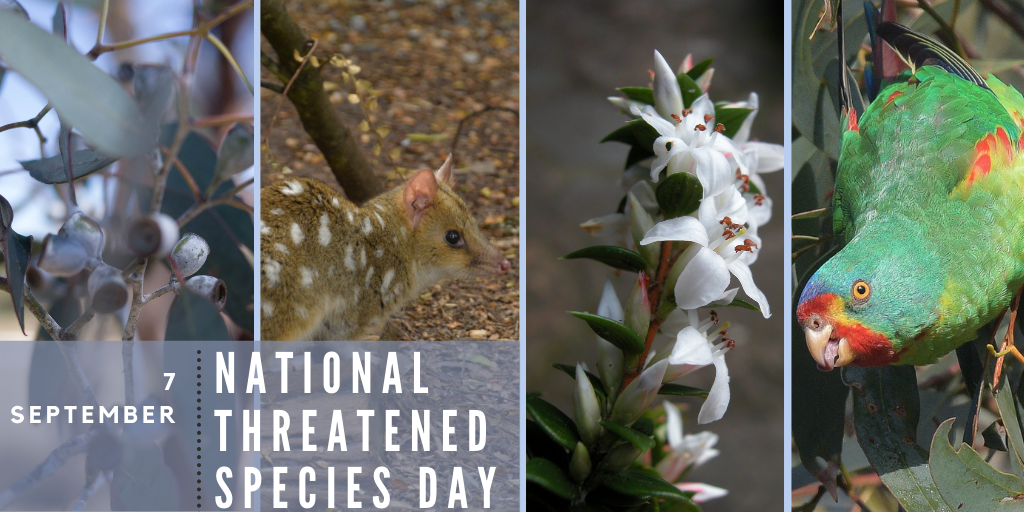September 7 is National Threatened Species Day, shining a spotlight on species that are at risk of extinction. Here in Tasmania, there are over 600 species of plant and animal that are listed as under threat. Our focus at NRM South is to contribute to the conservation and recovery of species and communities that are nationally significant and require urgent action.
Our activities include projects that are working to protect threatened species and communities such as the Swift Parrot, Eastern Quoll, Wedge-tailed Eagles, Orange-bellied Parrots, Morrisby’s gum, Southport heath and Black and Brookers gum forest and woodland.
Many of Tasmania’s threatened species are unique to this island. Others, such as the critically endangered Swift Parrot and Orange-bellied Parrot, rely on our landscapes as part of their breeding cycle. Tasmania is also a critical stronghold for some species that are rare or have become extinct in other parts of Australia, such as the eastern quoll. Through our Threatened Species program, we are delivering projects that will improve breeding success and protect these species from threats.
Our work to protect eastern quolls on Bruny Island through feral cat control activities will not only help ensure the species remains viable in Tasmania but will also ensure that we can continue to contribute to efforts to re-establish the species in southern Australia.
Through the industry-funded Tasmanian Wedge-tailed Eagle Research Fund, we are supporting high quality ecological or other relevant scientific research on Tasmanian Wedge-tailed Eagles which will assist with their management and protection.
One of only two migratory parrot species in the world, the Swift Parrot visits Tasmania’s south every spring to breed before returning to the mainland for winter. However, they are increasingly under threat from habitat loss and predation by sugar gliders (an introduced species to our island). We are working on a project to establish an effective approach to protecting them from sugar gliders alongside protecting and improving key habitat areas.
The world’s only other migratory parrot, the Orange-bellied parrot also visits southern Tasmania to breed. The species has been in decline for decades, but very little is known about the cause of this decline. Wild Orange-bellied Parrot populations now only breed at a single location at Melaleuca. We are working on a project that will better inform management actions to conserve the species.
Our threatened plants program is focused on the conservation of the endemic Southport heath, (which only occurs in a small population in the state’s far south) Morrisby’s gum (one of Australia’s most endangered eucalypts) and the critically endangered Black and Brookers Gum Forest and Woodland community.
These projects involve the partnerships of experts and land managers who are working with us to save some of our region’s most threatened species and are made possible through funding from the Australian Government’s National Landcare Program and private enterprise.
